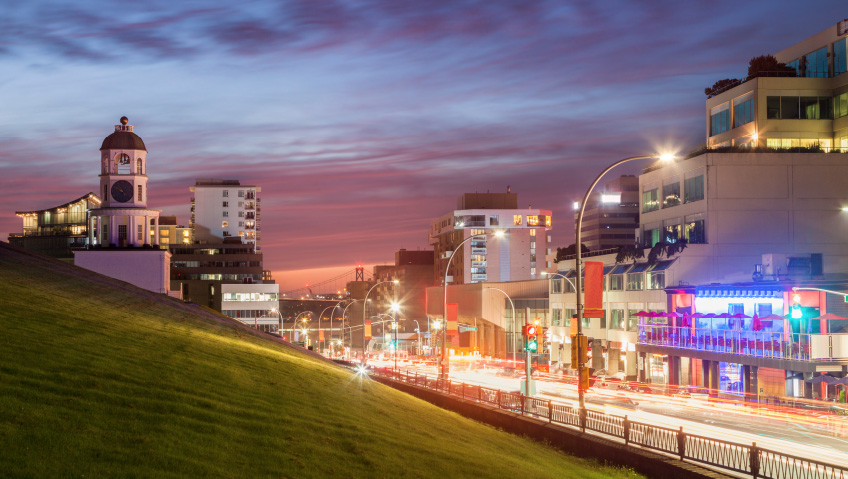Indoor shopping malls have been the centre of retail activity for more than half a century, and during that time became a social and cultural mecca for countless generations of consumers who have flocked there to find the latest styles, check out the latest trends, indulge in some delicious foods and snacks, catch a movie, or hang out with friends.
For many teens, a trip to the mall was a rite of passage; however, this is no longer the case as foot traffic from every demographic continues to decline. This culture shift has been instigated by changing consumer attitudes and behaviours, the rise of the internet, technology, and a post-pandemic world which has required shopping centres to reimagine their purpose to attract shoppers once again.
Where it all started
The first indoor mall opened in the U.S. in 1956, and it took only a few years for thousands more to follow suit across the country. In the decades that followed, this new retail business model, which concentrated a great variety of offerings under one roof, became the standard.
The shopping mall would reach peak popularity in the 1980s and 1990s, when more than half of retail activity took place in these centres. As the laws of supply and demand go, the shopping mall grew to new heights (and sizes).
In 1992, the first mega-mall, the Mall of America®, was built in Bloomington, Indiana, part of the Minnesota – St. Paul Metropolitan Area. At 5.6 million square feet, the four-level mall was a retail and entertainment behemoth. Complete with hundreds of stores, restaurants, a theme park, aquarium, and cinema, it was a draw for locals and tourists alike.
These new retail and entertainment landmarks, complete with culinary offerings, continued to be designed the same way for decades. The format and layout consisted of giant complexes laid out over a massive swath of land, with anchor tenants on either end (in some cases, depending on the design, on multiple ends).
Don’t fix what isn’t broken, right? Well, in the early- to mid-2000s, this retail dream started to meet its slow demise. The onset of the global financial crisis caused disposable income to diminish, as did the demand for many retail goods in response.
Anchor tenants, usually department stores, started to fail, which left gaping holes in the retail landmarks and placed even greater strain on their rental income, as they had leased a major percentage of the overall space and the malls faced very few prospects to take over the vacancy. As a result, many of these spaces remain vacant today.
Competition from big box stores and discount warehouses with major purchasing power, the growth in online shopping, and the increase in popularity of other forms of shopping like outdoor malls, strip malls, and markets changed the way that consumers shopped. Consumers became more discerning, and the pandemic only intensified this.
In 2017, a report by Credit Suisse predicted that by 2022 one in four U.S. malls would shutter, and this report was published before the COVID pandemic. Add in rising costs of real estate, increased rates of inflation, and global supply constraints that have persisted since the pandemic, and it’s a recipe for disaster. Or is it?
The truth is, just as retailers were forced to innovate their business models and pivot to remain viable during the pandemic, so too must the shopping centres that house them. While Class A and some Class B malls have been able to withstand many of the challenges thanks to the demographics they serve, many others are undergoing an identity crisis in response to changing consumer behaviours.
How retail centres are changing
During the pandemic, outdoor markets skyrocketed in popularity amongst shoppers for obvious reasons: many indoor shopping centres were closed to in-person shopping and if they were open, there were likely masking mandates, which caused many to flock to outdoor markets and stores with outdoor access to improve the safety and ease of the shopping experience.
While indoor shopping comes with its own share of advantages—the immediate satisfaction (or disappointment, depending on how the shopping goes), the sensory and social experience, an in-person system of accountability for sales—during the pandemic it became a hub for quick pick-ups, curbside deliveries, and drop-offs. All the while, outdoor shopping, strip malls, and farmers markets were abuzz. These locations benefited from improved visibility to the public as well as lower overhead costs.
During the pandemic, outdoor shopping options fared far better than the indoor alternative, but the indoor shopping experience has recovered at a faster rate since the establishment of a new post-pandemic normal, which means that consumers still see fundamental value in both shopping formats, particularly shopping centres that have done the work to evolve to meet the consumer where they are.
Taking advantage of technology
Regardless of whether a retailer has a presence in an indoor or outdoor setting, the only way to remain profitable in the new era of consumerism is to offer an omnichannel experience. Some of the new habits that were picked up during the pandemic have stuck around and aren’t necessarily bad.
Retail spaces in shopping centres can accentuate and complement a retailer’s online offerings. By blending in-store and online experiences using the right point of sales (POS) systems, leveraging consumer data to do so, the customer’s retail experience can be optimized, as can profitability. Likewise, tech-enabled delivery and pick-up hubs can bridge the in-person and online experience.
Retailers can also incorporate technology including augmented and virtual reality to connect the consumer to the product in new and exciting ways. Virtual change rooms, online fittings, and virtual customization are all ways to bring your brand to the consumer, connecting with them better than ever before. Technology can also support sustainability efforts like electric charging stations.
The most profitable and successful shopping centres have found a way to become lifestyle centres where food, entertainment, and retail come together, using technology to position themselves as a destination of choice for every demographic of consumer. From social media to the in-person experience, technology is the way to create a lasting connection to the customer wherever they are.
What to do with retail centre decay?
While shopping centres are reimagining themselves in the face of changing consumer behaviours and ever advancing technology, others have fallen into a state of disrepair, burdened with graffiti, destruction, and natural overgrowth. This prime real estate is nothing but wasted space.
Changes to zoning could reimagine these spaces as exhibition grounds, residences, office or commercial space, fitness centres, data centres, schools, restaurants, hotels, storage facilities, medical facilities, film studios, mixed-use centres for all of the above: the options are truly endless if the right investment decisions are made.
In the Greater Toronto Area, where housing demand is at an all-time high and available land is at a premium, planners are looking to the large swaths of land that are home to shopping malls to address some of these challenges. These lands are being rezoned and master planned to meet the changing needs of the community across the region.
Perhaps one of the most well-known examples is Yorkdale Shopping Centre. The mall’s owners, Oxford Properties, have had a mixed-use master plan drawn up that will maintain the mall itself but will see the addition of 19 new towers, varying in height, with a proposed gross floor area of just under half a million square meters.
This multi-decade project will include retail space, office space, green space, parking, residential, and hotel accommodations to make way for a population equal to a small community within a bustling metropolis. As Yorkdale is a well-performing operation, the mall itself will be preserved as the retail centre, but the prime real estate that surrounds the shopping centre vertically, horizontally, and underground will be optimized.
This redevelopment is also taking place outside of large metro areas. Small communities are experiencing similar efforts to revive local and regional retail centres. In Sault Ste. Marie, Ontario, a city with a population one percent the size of Toronto’s, this is proving so. The Sault’s Station Mall has struggled to maintain anchor tenants for the last 10 or so years since the demise of Sears, which long occupied the largest anchor space, a space that would require the right type of tenant to replace it.
The community long speculated as to what would or could take its place, and finally an announcement was made that would see $60 million invested to convert the space into a lifestyle destination of choice or “eatertainment complex” for both the city and the Northern Ontario region.
Trends to watch
When it comes to reimagining the purpose and function of shopping centres to adapt to new consumer behaviours, there is no one right answer. In fact, the best solution will depend on the needs of the community and its demographics.
Shopping centres could look to more flexible leasing arrangements, with terms that are friendlier to smaller brands and entrepreneurs to offer a greater variety to consumers and to serve as hubs for innovation and product development.
Regardless of what a shopping centre’s combination of offerings is, any winning strategy will focus on incorporating sustainability, health and wellness, and a sense of community. Co-working spaces, age-specific spaces, fitness centres, parks, and green spaces are all great ways to bring the community back to shopping centres to make them relevant and vibrant once again.






